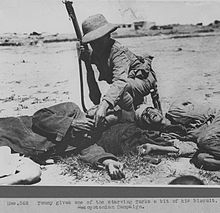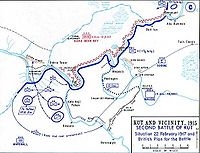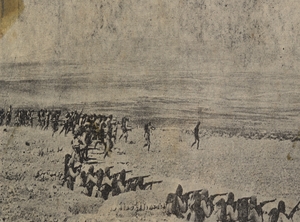Battle of Kut Al Amara, January 1917
25th January 2017
On this day 100 years ago, 123 men of the 9th Battalion Worcester Regiment lost their lives at the Battle of Kut Al Amara, Mesopotamia . The losses included 12 officers with 327 men killed or wounded in total.

The Mesopotamian campaign was a campaign in the Middle Eastern theatre of World War I fought between the Allies represented by the British Empire, mostly troops from Britain and the Indian Empire, and the Central Powers, mostly of the Ottoman Empire.
The following summarises the battle, with thanks to information from worcestershireregiment.com
In Mesopotamia the 9th Battalion of the Regiment had seen no fighting of any importance during the Summer and Autumn of 1916. The disastrous campaign for the relief of Kut had left both the opposing armies exhausted; and the heat of the ensuing months had been too severe to permit much movement of troops. So both armies, British and Turkish, lay quiet and waited for the cooler weather of Winter.
The move forward to the front began on 29 November in hot sun and sand. On December 8th the last stage was completed in rain and mud; and the march ended at "Twin Canals," a post on a desolate plain covered for the most part with six inches of muddy slush, in which the camp was pitched. Despite the dreary surroundings all were in good fettle and high spirits. "If my men fight as they have marched," recorded an officer of the Battalion, "they are sure to do well." The 9th Worcestershire now mustered 29 officers and 824 other ranks, a strong battalion once more.
The position of the Turkish Army holding Kut-al-Amara was somewhat unusual. As during the previous campaign, the Turkish forces were disposed on both banks of the River Tigris. The Turkish Army consisted nominally of five Divisions (Estimated to total about 20,800 with 70 guns), but those Divisions were not up to strength, and the Turkish Army was not nearly so well equipped or supplied as was the opposing British force of four strong Divisions.
British General Maude decided to strike at the Turkish right flank, to envelop and crush the enemy forces south of the Tigris and then to cross the river and cut off the rest of the enemy's forces from their base. The first stage was the envelopment of the enemy's right flank, and that operation was commenced in the middle of December. The 13th Division was entrusted with the initial advance.
The 9th Worcestershire, after three days rest in the camp at Twin Canals, received orders for their part in the forthcoming operations.
The 9th Worcestershire and 7th Gloucestershire would push on through the outpost line of the 38th Brigade and would advance along the River Hai to Bassouia Ford, the Worcestershire on the eastern and the Gloucestershire on the western bank. Advancement, battles and losses were incurred throughout December and early January.

In preparation for attack on the Hai Salient in January 2017 a system of trenches were constructed in successive parallel lines. By January 21st the new trenches were within 300 yards of the enemy's front line, and assault was possible. The new trenches stretched row behind row; "Queen's Trench", "King's Trench" , "Emperor's Trench", they were entitled. Headquarters of the 9th Worcestershire were established in the front line by the river bank.
Heavy rain on January 22nd postponed operations but the postponement enabled arrangements to be made even more complete.
None doubted that a hard fight was in prospect. It was certain that the enemy would make every effort to hold their position. Our airmen had reported new lines of trenches under construction within the Hai Salient and it was certain that the defenders had been strongly reinforced.
The attack was planned in two phases; a preliminary attack against the southern apex of the Hai Salient by the 39th and 40th Brigades on the western and eastern banks respectively, followed by an attack of the 38th Brigade against the Salient's eastern face.
The attack of the 39th Brigade on the western bank of the Hai was to be made by two battalions, the 9th Worcestershire and 7th North Staffordshire. The other two battalions of the Brigade would be ready to reinforce.
On the night of January 24th/25th the two attacking battalions concentrated in the forward trenches; by 9.0 a.m. next morning all was ready. It was during this Battle that 9th Worcestershire Regiment lost so many men.

You can read more about the campaign here: